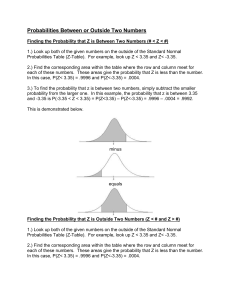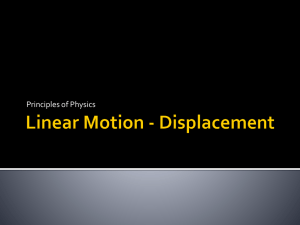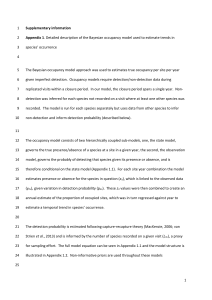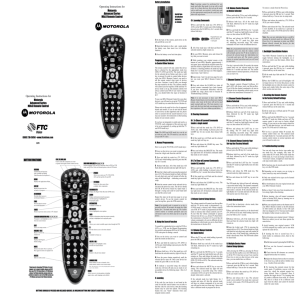Point Source Dispersion Parameters
advertisement
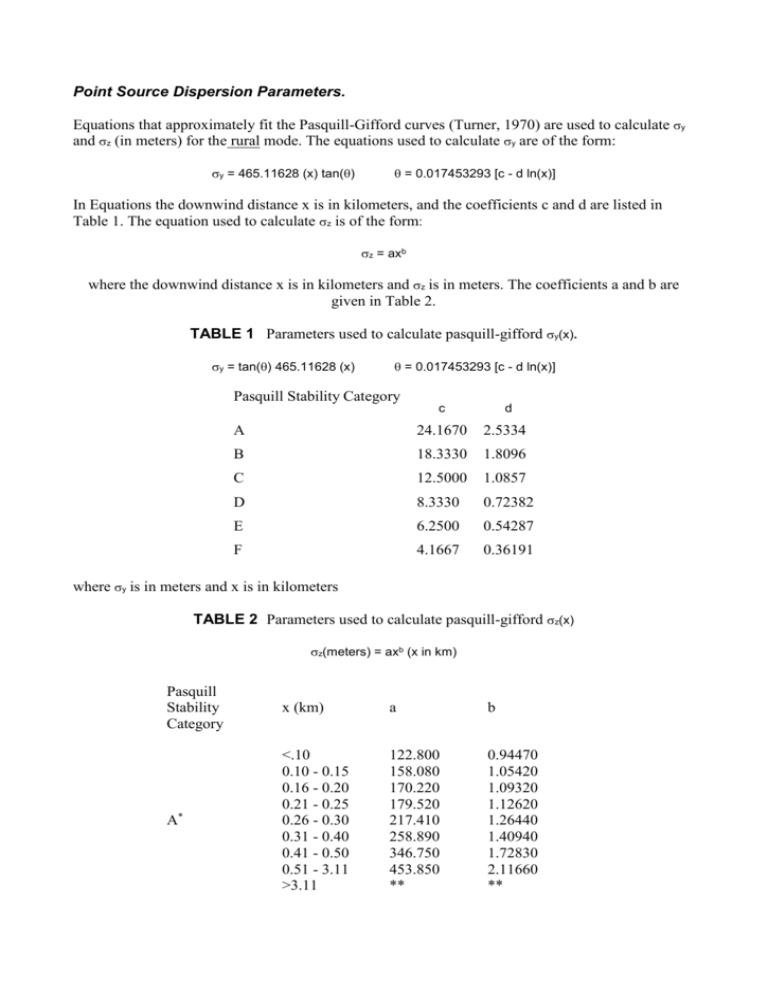
Point Source Dispersion Parameters. Equations that approximately fit the Pasquill-Gifford curves (Turner, 1970) are used to calculate y and z (in meters) for the rural mode. The equations used to calculate y are of the form: y = 465.11628 (x) tan() = 0.017453293 [c - d ln(x)] In Equations the downwind distance x is in kilometers, and the coefficients c and d are listed in Table 1. The equation used to calculate z is of the form: z = axb where the downwind distance x is in kilometers and z is in meters. The coefficients a and b are given in Table 2. TABLE 1 Parameters used to calculate pasquill-gifford y(x). y = tan() 465.11628 (x) = 0.017453293 [c - d ln(x)] Pasquill Stability Category c d A 24.1670 2.5334 B 18.3330 1.8096 C 12.5000 1.0857 D 8.3330 0.72382 E 6.2500 0.54287 F 4.1667 0.36191 where y is in meters and x is in kilometers TABLE 2 Parameters used to calculate pasquill-gifford z(x) z(meters) = axb (x in km) Pasquill Stability Category x (km) a b A* <.10 0.10 - 0.15 0.16 - 0.20 0.21 - 0.25 0.26 - 0.30 0.31 - 0.40 0.41 - 0.50 0.51 - 3.11 >3.11 122.800 158.080 170.220 179.520 217.410 258.890 346.750 453.850 ** 0.94470 1.05420 1.09320 1.12620 1.26440 1.40940 1.72830 2.11660 ** B* <.20 0.21 - 0.40 >0.40 90.673 98.483 109.300 0.93198 0.98332 1.09710 C* All 61.141 0.91465 D .30 0.31 - 1.00 1.01 - 3.00 3.01 - 10.00 10.01 - 30.00 >30.00 34.459 32.093 32.093 33.504 36.650 44.053 0.86974 0.81066 0.64403 0.60486 0.56589 0.51179 E <.10 0.10 - 0.30 0.31 - 1.00 1.01 - 2.00 2.01 - 4.00 4.01 - 10.00 10.01 - 20.00 20.01 - 40.00 >40.00 24.260 23.331 21.628 21.628 22.534 24.703 26.970 35.420 47.618 0.83660 0.81956 0.75660 0.63077 0.57154 0.50527 0.46713 0.37615 0.29592 F <.20 0.21 - 0.70 0.71 - 1.00 1.01 - 2.00 2.01 - 3.00 3.01 - 7.00 7.01 - 15.00 15.01 - 30.00 30.01 - 60.00 >60.00 15.209 14.457 13.953 13.953 14.823 16.187 17.836 22.651 27.074 34.219 0.81558 0.78407 0.68465 0.63227 0.54503 0.46490 0.41507 0.32681 0.27436 0.21716 * If the calculated value of z exceed 5000 m, z is set to 5000 m. ** z is equal to 5000 m. Tables 3 and 4 show the equations used to determine y and z for the urban option. These expressions were determined by Briggs as reported by Gifford (1976) and represent a best fit to urban vertical diffusion data reported by McElroy and Pooler (1968). While the Briggs functions are assumed to be valid for downwind distances less than 100m, the user is cautioned that concentrations at receptors less than 100m from a source may be suspect. TABLE 3 (x is in meters) Pasquill Stability Category y(meters)* A 0.32 x (1.0 + 0.0004 x)-1/2 B 0.32 x (1.0 + 0.0004 x)-1/2 C 0.22 x (1.0 + 0.0004 x)-1/2 D 0.16 x (1.0 + 0.0004 x)-1/2 E 0.11 x (1.0 + 0.0004 x)-1/2 F 0.11 x (1.0 + 0.0004 x)-1/2 TABLE 4 (x is in meters) Pasquill Stability Category z(meters)* A 0.24 x (1.0 + 0.001 x)1/2 B 0.24 x (1.0 + 0.001 x)1/2 C 0.20 x D 0.14 x (1.0 + 0.0003 x)-1/2 E 0.08 x (1.0 + 0.0015 x)-1/2 F 0.08 x (1.0 + 0.0015 x)-1/2

